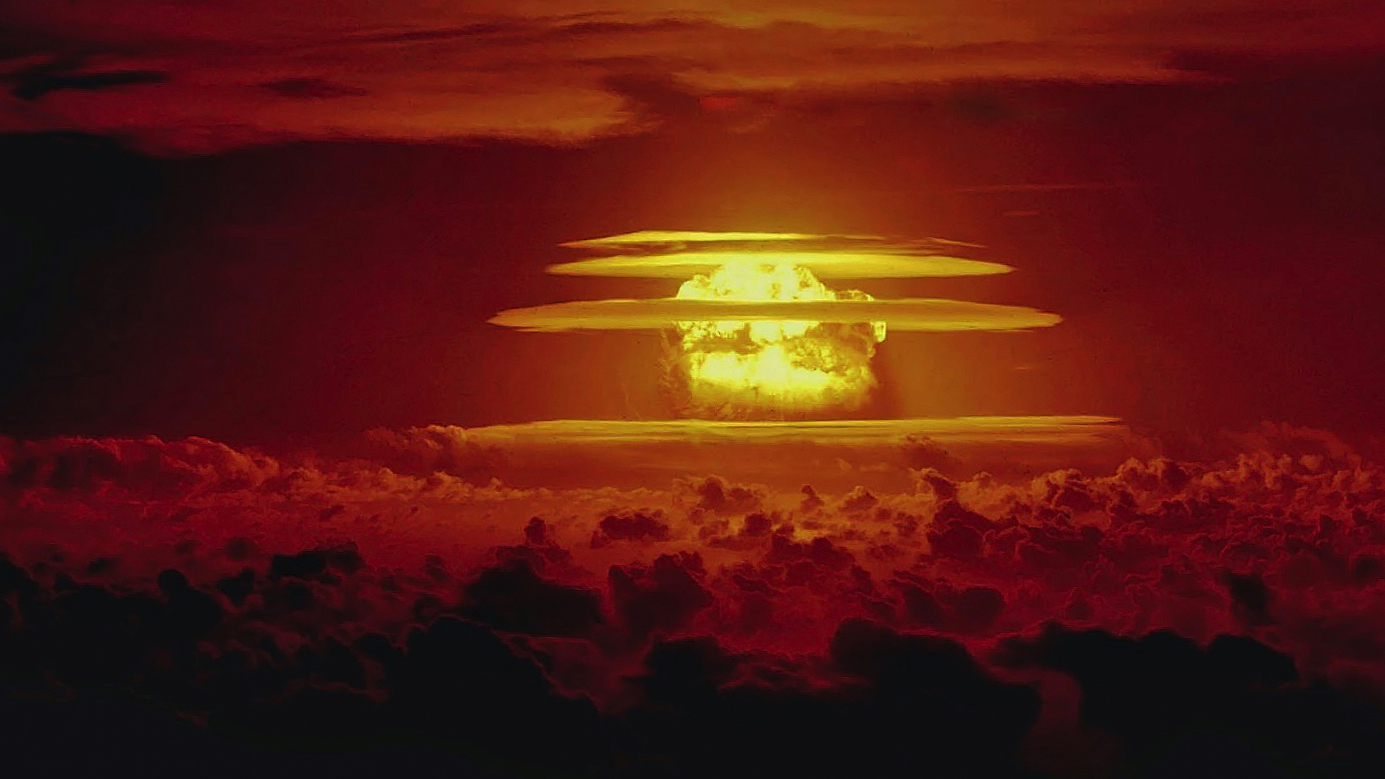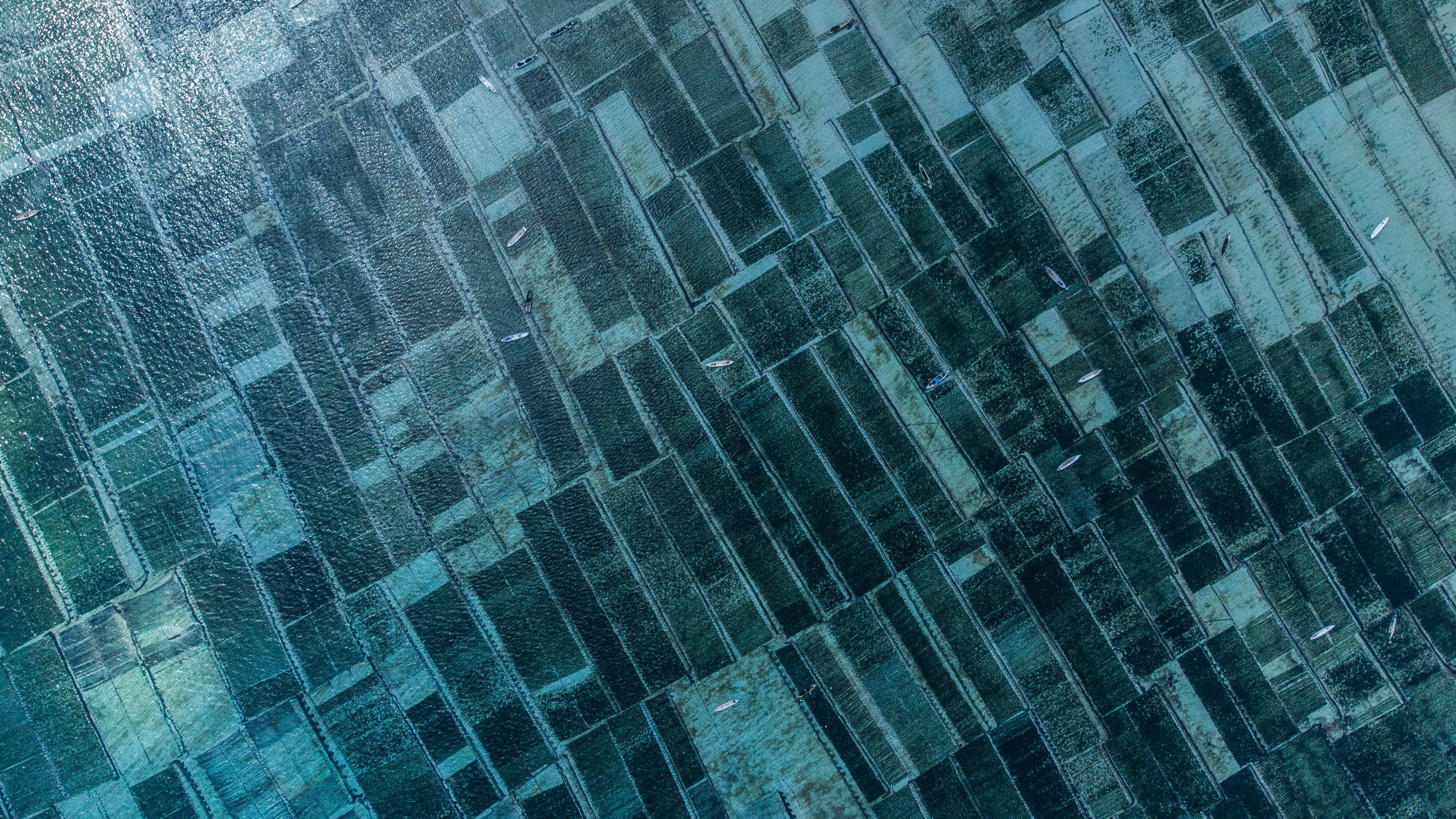Mass starvation after nuclear war could be partially averted with one specific food — seaweed
A nuclear winter could reduce global calorie production by as much as 90%. But vast kelp farms could help save 1.2 billion lives until temperatures recover.

Scientists have discovered a surprising alternate food source that could save a huge number of lives in the aftermath of a catastrophic nuclear war — seaweed.
A Nuclear war would plunge our planet into a deep nuclear winter. In the worst-case scenario, a nuclear exchange between the U.S. and Russia (which together possess nearly 90% of the world's nuclear weapons) could eject up to 165 million tons (150 million metric tons) of soot into Earth's atmosphere, reducing surface temperatures by 16 degrees Fahrenheit (9 degrees Celsius) and sending global calorie production plummeting by as much as 90%.
But in a new study, scientists found that within nine to 14 months of nuclear war, vast arrays of kelp grown on ropes in the Gulf of Mexico and across the Eastern seaboard could be harvested — helping to keep up to 1.2 billion human fed
At their fullest extent, the seaweed farms would replace 15% of the food currently consumed by humans, while also providing 50% of current biofuel production and 10% of animal feed. The researchers published their findings Jan. 9 in the journal Earth's Future.
Related: Nuclear bombs set off new geological epoch in the 1950s, scientists say
"Over 2 billion people would be in danger of starvation after a moderate India-Pakistan nuclear war and 5 billion people after a U.S.-Russa nuclear war," co-author Cheryl Harrison, an assistant professor of oceanography and coastal sciences at Louisiana State University, told Live Science. "Thus, there is a need for exploration of alternative foods."
The most immediate effects of a nuclear war, at least for those in a targeted area, are incineration followed by radiation poisoning for those in surrounding areas. These gruesome effects have been known since the U.S. dropped the atomic bomb "Little Boy" on the Japanese city of Hiroshima on Aug. 6. 1945.
Get the world’s most fascinating discoveries delivered straight to your inbox.
The single bomb, as much as five times smaller in yield than the thermonuclear bombs in existing arsenals, killed an estimated 140,000 people within five months and destroyed or severely damaged more than 60,000 of the city's approximately 90,000 buildings.
Yet potentially the most lethal outcome of even a small-scale nuclear war is the impact it would have on agriculture. In the doomsday scenario of "nuclear winter," radioactive dust and smoke would block out a significant portion of the sun's light. This would cause temperatures to drop, smothering many of the world's crops and likely creating a global famine that could kill billions of people.

In a previous study, the researchers modeled the apocalyptic consequences of a nuclear war . Now, to investigate how some people might survive, the scientists have modeled crop growth in environments that wouldn't see temperatures drop so precipitously — tropical oceans.
"The ocean, and water in general, has higher specific heat than land, so stores more heat, and it is harder to heat up and cool down. This is why radiators work so well, they store heat and radiate it over time," Harrison said. "So, the ocean is a great place to target for alternative food production, as opposed to greenhouses on land, which would need a lot of heating in a time when fuel would be in high demand."
The scientists' model revealed that kelp farms wouldn't just survive but thrive and expand as surface temperatures dropped. This is because colder air would force surface water to sink more, increasing the circulation of nutrient-rich water up from the depths to replace it.
As the iodine found in seaweed can be toxic to humans at high quantities, the uses for kelp grown in farms would primarily be indirect, the researchers said. But by using it to feed animals and produce biofuels, it would free up the surviving arable land for other crops. This could help humans weather a nuclear winter until, decades later, the climate begins to recover.
And kelp isn't just at hand in the event of a nuclear winter: It could also be a lifeline following other disruptions to global food systems, such as massive asteroid impacts or gigantic volcanic eruptions. For example, the 1816 eruption of Indonesia's Mount Tambora led to crop failures and food shortages across the Northern Hemisphere — becoming known as the "Year Without Summer."
"Throughout history, large eruptions have caused famine both regionally and globally," Harrison said. "Either way, we need a plan to feed ourselves in these sudden sunlight reduction scenarios."

Ben Turner is a U.K. based writer and editor at Live Science. He covers physics and astronomy, tech and climate change. He graduated from University College London with a degree in particle physics before training as a journalist. When he's not writing, Ben enjoys reading literature, playing the guitar and embarrassing himself with chess.


